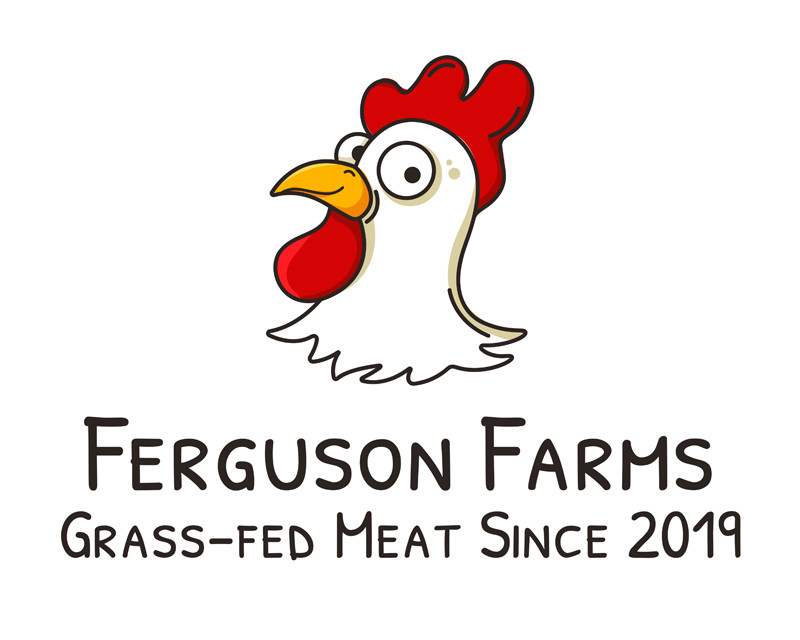Food Isn’t Unlimited: How Your Choices Support Sustainable Farming
posted on
November 27, 2024
Food Isn’t Unlimited: How Your Choices Support Sustainable Farming | Ferguson Farms
Food Isn’t Unlimited: A Reality Check
Explore the importance of valuing all cuts of meat to support sustainable, ethical farming.
The Myth of Infinite Food
We live in a world where grocery stores create an illusion of abundance. Shelves are stocked year-round with chicken breasts, boneless cuts, and other popular items, making it easy to believe that food is always available. This myth, however, disconnects us from the reality of food production. The truth is: food is not unlimited.
Each neatly packaged cut represents a real animal, raised on a farm with time, effort, and resources. This illusion of infinite food leads to a troubling cycle—consumers demand only specific cuts while overlooking the rest of the animal, and unsustainable farming practices emerge to meet this demand.
A Shift in Mindset: Whole Animal Consumption
At Ferguson Farms, we had to rethink how we approached food when we started farming. Customers often wanted specific cuts like chicken breasts or steaks, so we made the conscious decision to enjoy drumsticks, thighs, and roasts at home. Over time, we grew to love these flavorful, nutrient-rich cuts.
This experience taught us that every part of the animal has value. A drumstick, thigh, or roast isn’t a “lesser” cut—it’s simply another part of the whole, requiring the same care and effort to raise, process, and deliver. By embracing the whole animal, we honor the hard work of ethical farming and minimize waste.
Why Food Isn’t Unlimited
Food production is limited by nature. Ethical, sustainable farming practices prioritize the well-being of animals, the health of the soil, and the overall environment. Unlike industrial systems such as Confined Animal Feeding Operations (CAFOs), where animals are raised in overcrowded and unhealthy conditions to produce mass quantities cheaply, sustainable farms operate within natural limits.
For example:
- Seasonality: Pasture-raised animals depend on the health of the land and the seasons. This means there are natural ebbs and flows in production.
- Land Stewardship: Regenerative farming focuses on soil health, crop rotation, and responsible grazing, all of which take time to nurture.
- Animal Welfare: Ethical farmers ensure animals are raised in humane conditions, with access to pasture and space to roam, which limits how many animals can be raised at once.
When you support sustainable farms, you’re aligning with these principles. This is why certain cuts or products may sell out, and it’s also why your choices matter.
The Benefits of Embracing All Cuts
Choosing to buy all cuts of meat isn’t just about sustainability—it’s also a delicious way to expand your palate and enjoy new culinary experiences. Here’s how embracing a variety of cuts benefits everyone:
- Reduces Food Waste: When every part of the animal is utilized, there’s less waste and greater appreciation for the resources that went into raising it.
- Supports Small Farms: Farmers rely on customers who value their work and understand that ethical farming isn’t about endless supply.
- Encourages Creativity in the Kitchen: Cuts like thighs, drumsticks, roasts, and even organ meats are incredibly versatile and can elevate your cooking game.
How to Make a Difference with Your Choices
If you’re ready to align your values with your meals, here are a few steps you can take today:
- Buy Directly from Farmers: Purchase meat from sustainable farms that prioritize humane practices, like Ferguson Farms.
- Try New Cuts: Instead of always reaching for boneless chicken breasts or steaks, experiment with drumsticks, roasts, or ground beef.
- Learn to Cook with Variety: Explore recipes that make use of different cuts. For example, chuck roasts are perfect for slow cooking, while steaks can be grilled to perfection.
- Educate Yourself: Understand the impact of your food choices on the environment, the farming industry, and your health.
A Sustainable Future Starts with You
When you support farms like Ferguson Farms, you’re choosing a sustainable, ethical, and resilient food system. You’re helping to ensure that every animal raised for food is treated with respect, and every cut is valued—not just the most popular ones.
Let’s reshape the way we think about food. Together, we can create a future where farming aligns with sustainability, health, and ethics.
Ready to make a difference?
Explore our offerings below and start supporting a better food system today.




